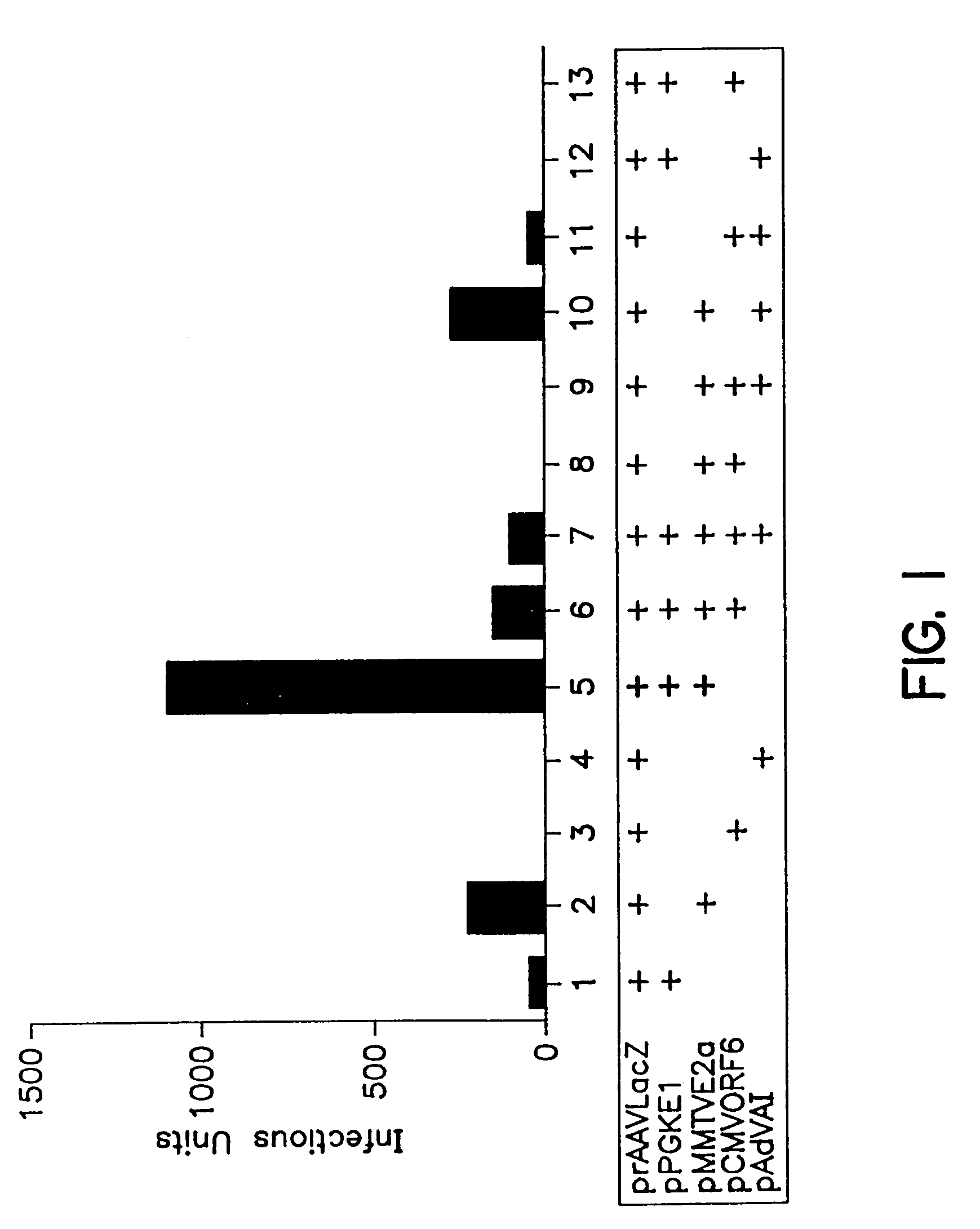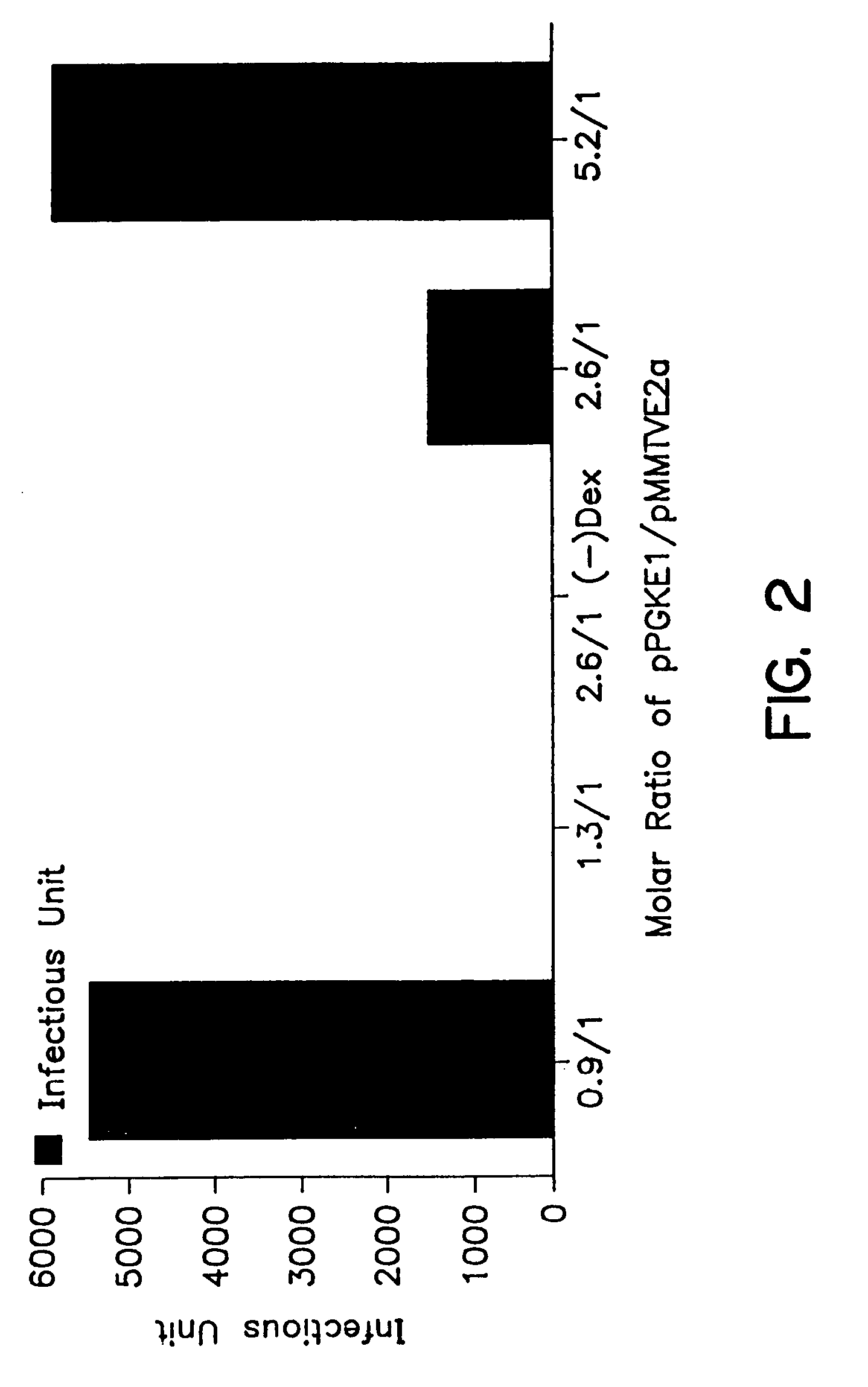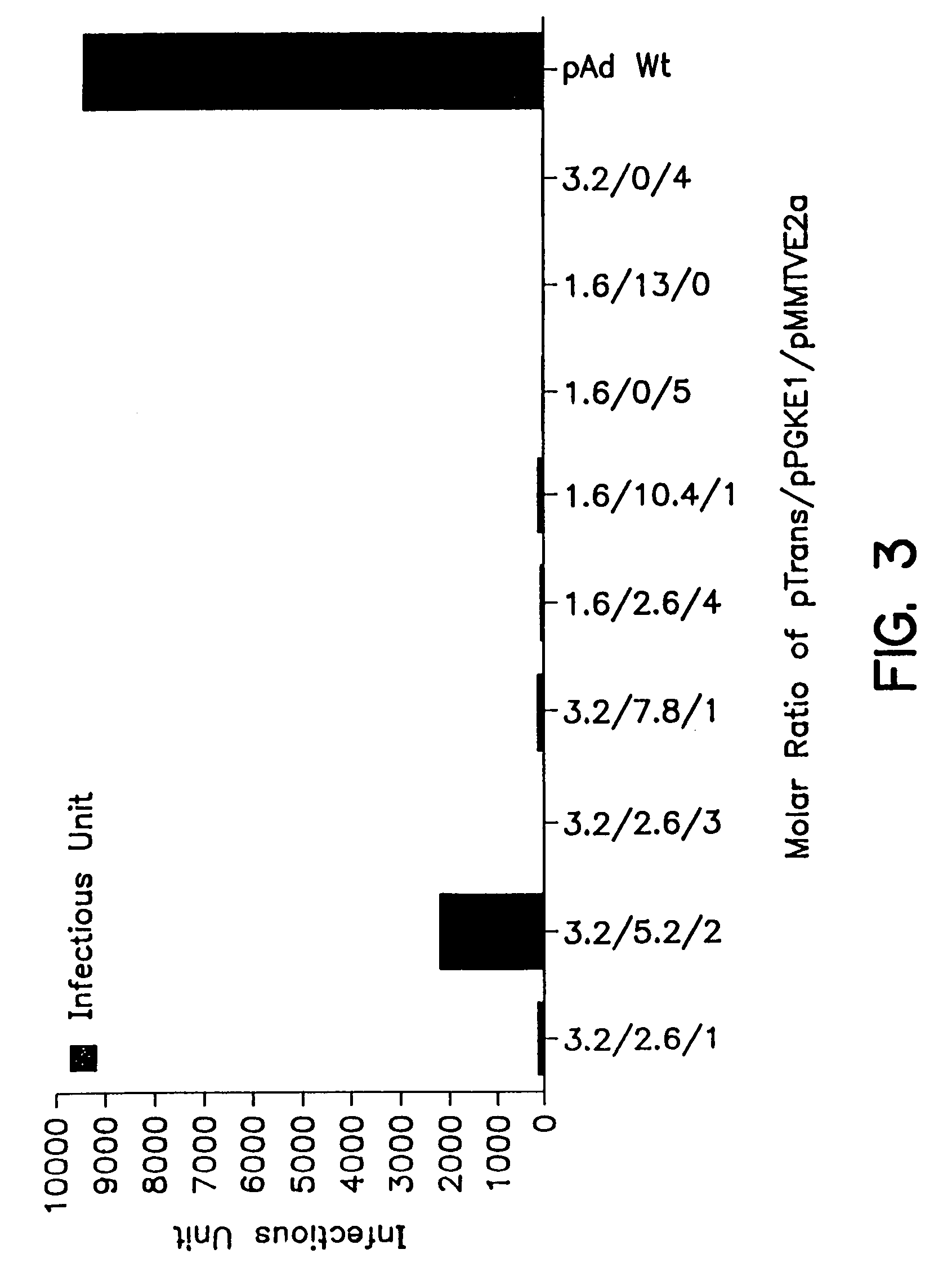Compositions and methods for helper-free production of recombinant adeno-associated viruses
a technology of adenovirus and amplification, which is applied in the field of compositions and methods for establishing aav as a transducer vector for the delivery of dna in the form of a desired transgene, and can solve the problems of unacceptably high levels of wt aav, slow progress towards establishing aav as a transducer vector for the delivery of infectious virions, and lack of highly efficient schemes for encap
- Summary
- Abstract
- Description
- Claims
- Application Information
AI Technical Summary
Benefits of technology
Problems solved by technology
Method used
Image
Examples
example 1
AD HELPER GENES AND rAAV PRODUCTION IN B-50 CELLS
A. Plasmids
[0091]Plasmid constructions described below involved conventional genetic engineering methods, such as those described in Sambrook et al, cited above.[0092](1) prAAVCMVLacZ (also prAAVLacZ)[0093]Plasmid prAAVCMVLacZ [see International Patent Application No. WO95 / 13598 for SEQ ID NO: 1; and Fisher K. J. et al, J. Virol., 70: 520–532 (1996), both incorporated by reference herein] is a rAAV cassette in which AAV rep and cap genes are replaced with a minigene expressing β-galactosidase from a CMV promoter. The linear arrangement of prAAVCMVLacZ includes:[0094](a) the 5′ AAV ITR (bp 1–173) obtained by PCR using pAV2 [C. A. Laughlin et al, Gene, 23: 65–73 (1983)] as template [nucleotide numbers 365–538 of SEQ ID NO:1];[0095](b) a CMV immediate early enhancer / promoter [Boshart et al, Cell, 41: 521–530 (1985); nucleotide numbers 563–1157 of SEQ ID NO:1],[0096](c) as optional spacer sequences an SV40 intron (nucleotide numbers 1178–...
example 2
MOLAR RATIO OF E1 TO E2A GENE-CONTAINING PLASMIDS AND rAAV PRODUCTION IN B-50 CELLS
[0121]To optimize rAAV productivity by helper-free B-50 / transfection system, B-50 cells were seeded at a density of 2×105 cells per 60 mm plate for 24 hours and then transfected with prAAVLacZ, and a mixture of pPGKE1 and pMMTVE2a plasmid DNAs at different molar ratios: 2.6:1, 0.9:1, 5.2:1, and 1.3:1. Ninety-six hours post-transfection, the cell lysates were prepared and the rAAVLacZ in each lysate was titered as described in Example 1.
[0122]The results which are shown in the bar graph of FIG. 2 illustrate that there are preferred molar ratios of the E1 containing plasmids to the E2a containing plasmids which permit enhanced production of the rAAV according to the method of this invention. Under these particular experimental conditions, the maximum rAAV production was obtained when the ratio was either 5.2:1 or 0.9:1 in the presence of dexamethasone, the inducing agent for the MMTV promoter which cont...
example 3
HELPER-FREE rAAV PRODUCTION IN A549 CELLS
[0123]To verify the discovery that only Ad E1 and E2 genes are necessary to provide helper functions for rAAV production, the method of the present invention was attempted in other mammalian cell lines, such as HEK293 cells which have integrated therein an E1 gene under a constitutive promoter, and A549 (human lung carcinoma) cells, which contain no adenovirus genes.
[0124]P5-Rep / Cap is a plasmid used in this experiment which carries the AAV rep and cap sequences under the control of the native AAV promoter P5. This plasmid was constructed as follows: the MT promoter and ORF6 sequences were removed from pMTE4ORF6 plasmid [G. P. Gao et al, J. Virol., 70: 8934–8943 (1996)] by EcoRI / BamHI digestion and replaced with a 4.3 kb P5-Rep / Cap fragment which was isolated from pSub201 plasmid [Samulski, R. J. et al, J. Virol., 63: 3822–3828 (1989)] by XbaI digestion. Plasmid construction involved conventional genetic engineering methods, such as those des...
PUM
| Property | Measurement | Unit |
|---|---|---|
| Ratio | aaaaa | aaaaa |
Abstract
Description
Claims
Application Information
 Login to View More
Login to View More - R&D
- Intellectual Property
- Life Sciences
- Materials
- Tech Scout
- Unparalleled Data Quality
- Higher Quality Content
- 60% Fewer Hallucinations
Browse by: Latest US Patents, China's latest patents, Technical Efficacy Thesaurus, Application Domain, Technology Topic, Popular Technical Reports.
© 2025 PatSnap. All rights reserved.Legal|Privacy policy|Modern Slavery Act Transparency Statement|Sitemap|About US| Contact US: help@patsnap.com



